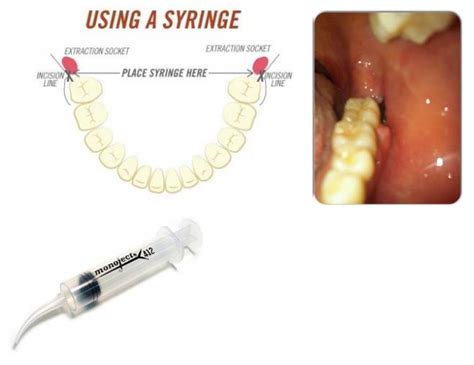Food & Wisdom Teeth Holes: A Pain-Free Cleaning Guide
Wisdom teeth removal is a common procedure, leaving behind extraction sites that require careful attention to promote healing and prevent infection. Navigating food choices and cleaning around these vulnerable areas can be tricky, but with the right approach, you can ensure a comfortable and speedy recovery. This guide provides comprehensive advice on managing food and maintaining oral hygiene after wisdom teeth extraction.
What to Eat After Wisdom Teeth Removal?
The immediate post-operative period calls for a soft food diet. This is crucial to avoid disturbing the blood clots that form in the extraction sites, a process essential for proper healing. Here's a breakdown of suitable food options:
- Liquids: Smoothies (avoiding straws!), broth, protein shakes, yogurt, and milk are excellent choices. These provide essential nutrients without requiring extensive chewing.
- Soft Foods: Applesauce, mashed potatoes, pudding, scrambled eggs, and well-cooked pasta are easy to consume and gentle on the extraction sites.
- Pureed Foods: Soups (again, avoid straws!), pureed vegetables, and baby food can be highly beneficial in the initial days.
- Gradually Introduce Solids: As healing progresses, you can gradually reintroduce soft, easily chewed foods like cooked fish, soft-cooked chicken, and well-cooked vegetables. Always avoid foods that require excessive chewing or could get lodged in the sockets.
What Foods to Avoid After Wisdom Teeth Removal?
Certain foods should be strictly avoided in the initial stages of recovery to prevent complications:
- Hard Foods: Anything crunchy, such as chips, nuts, popcorn, and hard candies, can dislodge blood clots and cause significant pain.
- Spicy Foods: Spicy food can irritate the extraction sites, delaying healing and causing discomfort.
- Acidic Foods: Acidic foods like citrus fruits and tomatoes can also irritate the wounds.
- Foods Requiring Chewing: Avoid foods that require strenuous chewing, such as steak, tough vegetables, and whole grains.
How to Clean Your Mouth After Wisdom Teeth Removal?
Maintaining meticulous oral hygiene is vital for preventing infection. However, cleaning around the extraction sites requires a gentle touch. Here's how to approach it:
- Saltwater Rinses: Mix 1/4 to 1/2 teaspoon of salt in a glass of warm water. Gently rinse your mouth several times a day, especially after meals. This helps clean the area, reduce inflammation, and prevent infection. Avoid forceful rinsing, which could dislodge the blood clot.
- Soft-Bristled Toothbrush: Use a soft-bristled toothbrush to gently clean your teeth, avoiding direct contact with the extraction sites for the first few days.
- Avoid Brushing Directly Over Extraction Sites: For the first few days, avoid brushing directly over the extraction sites. Instead, focus on cleaning the rest of your mouth thoroughly.
- Dental Floss (with Caution): Avoid flossing near the extraction sites until they have begun to heal. Your dentist or oral surgeon can advise when it's safe to resume flossing.
How Long Does it Take to Heal From Wisdom Teeth Removal?
Healing time varies depending on individual factors such as overall health and the complexity of the extraction. However, most individuals experience significant improvement within a week, with complete healing taking several weeks or even months.
What if I Experience Pain or Swelling?
Some pain and swelling are expected after wisdom teeth extraction. However, severe pain, excessive swelling, or signs of infection (pus, fever, redness) should be reported to your dentist or oral surgeon immediately. They may prescribe pain medication or other treatments.
Can I Use a Straw After Wisdom Teeth Removal?
No. Using a straw creates suction, which can dislodge blood clots and cause a condition called dry socket, a painful complication. Avoid straws completely during the healing process.
When Can I Resume My Normal Diet After Wisdom Teeth Removal?
This depends on your individual healing progress. As the pain subsides and the extraction sites begin to heal, you can gradually reintroduce more solid foods into your diet. Consult your dentist or oral surgeon for personalized advice.
What are the Signs of a Dry Socket After Wisdom Teeth Removal?
Dry socket is a painful complication that occurs when the blood clot in the extraction site is dislodged or dissolves prematurely. Symptoms include intense pain, a bad taste or smell, and a visible empty socket. If you suspect you have a dry socket, contact your dentist or oral surgeon immediately.
Remember, this information is for general guidance only. Always follow your dentist or oral surgeon's specific instructions for post-operative care. They can provide personalized advice based on your individual situation and ensure a smooth and comfortable recovery.

